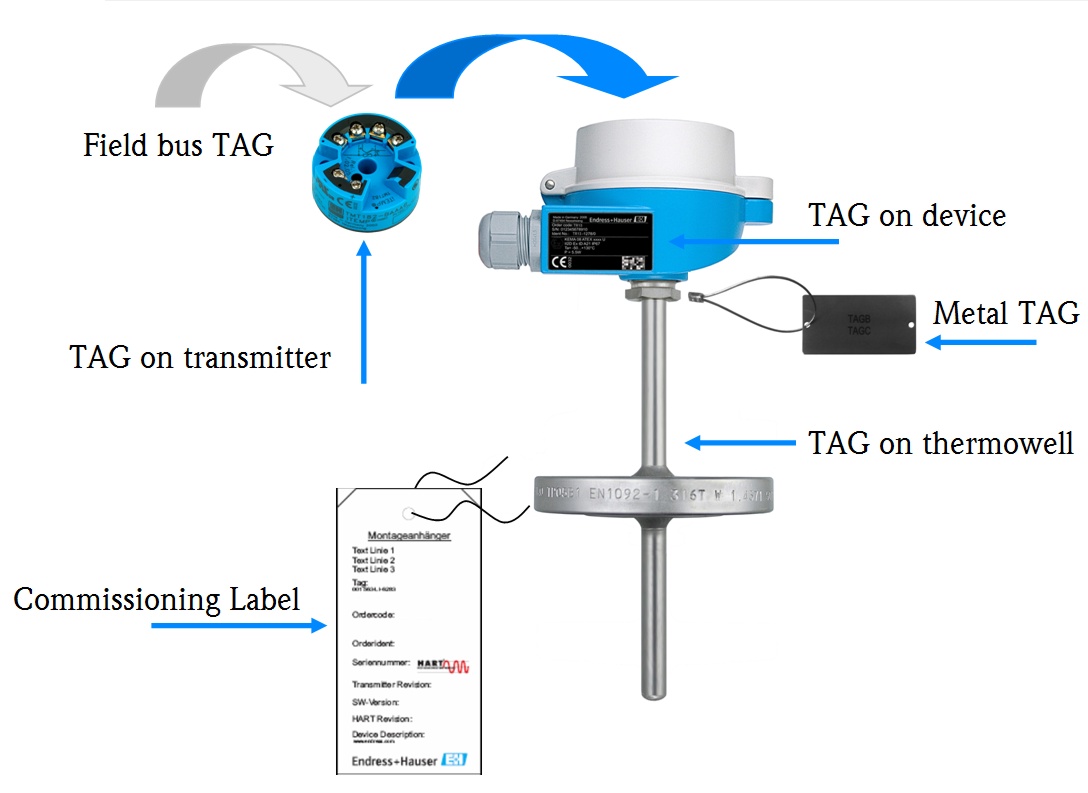|
Field bus TAG
Field bus TAG marks the measurement point using the electrical interface. (PCP, HART, PA and FF).
On standardized field busses only those parameters that are defined by the respective norms are supported.
|
HART:
|
max. 8 characters
|
|
HART Descriptor:
|
max. 16 characters
|
|
Profibus:
|
max. 32 characters
|
|
Foundation Fieldbus
|
max. 32 characters
|
The Field bus TAG can be modified subsequently
by the customer using the set-up.
Metal TAG
The metal TAG can be removed and transferred to a replacement device. It can be fastened to
parts of the plant itself. The metal TAG is shipped
together with an attachment wire.
TAG on device
This TAG is permanently attached to the device either as a foil or lasered
or engraved.
Customer TAG
Customers can also issue an own tag plate or stick-on label and provide it with the order. The TAG number must already be engraved or
printed on the tag plate. These TAG plates then are shipped fastened to the device.
Commissioning Label
The TAG number is printed on a cardboard label. The label
is shipped fastened to the device. After installation
the commissioning label can be removed easily and is
exerted for the configuration of the instrument in the
control room.
|
